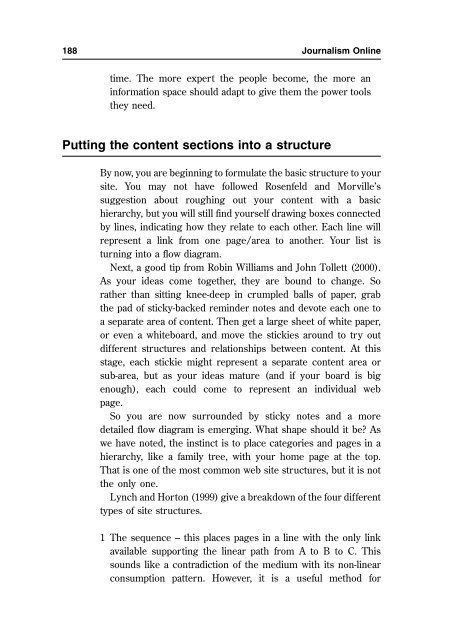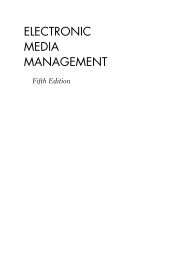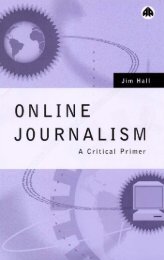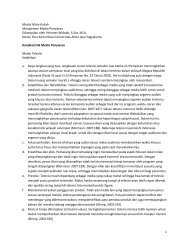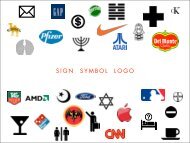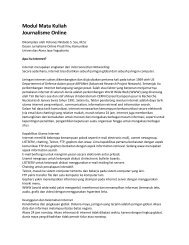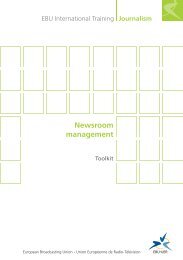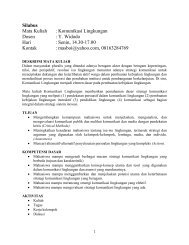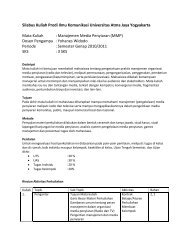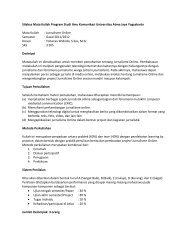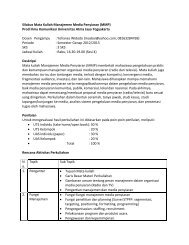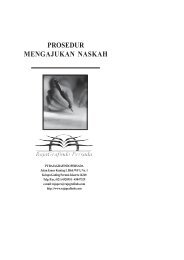1What is online journalism? - Ayo Menulis FISIP UAJY
1What is online journalism? - Ayo Menulis FISIP UAJY
1What is online journalism? - Ayo Menulis FISIP UAJY
Create successful ePaper yourself
Turn your PDF publications into a flip-book with our unique Google optimized e-Paper software.
188 Journal<strong>is</strong>m Online<br />
time. The more expert the people become, the more an<br />
information space should adapt to give them the power tools<br />
they need.<br />
Putting the content sections into a structure<br />
By now, you are beginning to formulate the basic structure to your<br />
site. You may not have followed Rosenfeld and Morville’s<br />
suggestion about roughing out your content with a basic<br />
hierarchy, but you will still find yourself drawing boxes connected<br />
by lines, indicating how they relate to each other. Each line will<br />
represent a link from one page/area to another. Your l<strong>is</strong>t <strong>is</strong><br />
turning into a flow diagram.<br />
Next, a good tip from Robin Williams and John Tollett (2000).<br />
As your ideas come together, they are bound to change. So<br />
rather than sitting knee-deep in crumpled balls of paper, grab<br />
the pad of sticky-backed reminder notes and devote each one to<br />
a separate area of content. Then get a large sheet of white paper,<br />
or even a whiteboard, and move the stickies around to try out<br />
different structures and relationships between content. At th<strong>is</strong><br />
stage, each stickie might represent a separate content area or<br />
sub-area, but as your ideas mature (and if your board <strong>is</strong> big<br />
enough), each could come to represent an individual web<br />
page.<br />
So you are now surrounded by sticky notes and a more<br />
detailed flow diagram <strong>is</strong> emerging. What shape should it be? As<br />
we have noted, the instinct <strong>is</strong> to place categories and pages in a<br />
hierarchy, like a family tree, with your home page at the top.<br />
That <strong>is</strong> one of the most common web site structures, but it <strong>is</strong> not<br />
the only one.<br />
Lynch and Horton (1999) give a breakdown of the four different<br />
types of site structures.<br />
1 The sequence – th<strong>is</strong> places pages in a line with the only link<br />
available supporting the linear path from A to B to C. Th<strong>is</strong><br />
sounds like a contradiction of the medium with its non-linear<br />
consumption pattern. However, it <strong>is</strong> a useful method for


